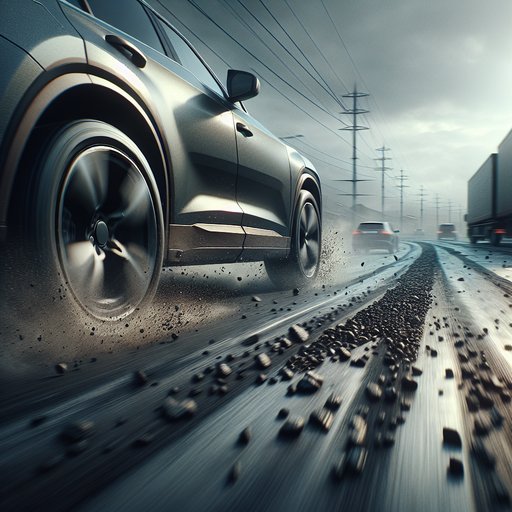
We spent a week evaluating the CX-5 Turbo’s secondary ride, wheel impact harshness, and suspension noise over cratered city streets, patched county roads, and concrete interstates to see how Mazda’s chassis tuning copes in the real world.
Our test car was a 2024 Mazda CX-5 Turbo Signature (AWD standard), on 19-inch wheels with 225/55R19 all-season tires, suspension by MacPherson struts up front and a multi-link rear. Curb weight hovered around 3,800 lb. For control, we confirmed placard cold pressures (35 psi) and ran the same route at 35–70 mph, repeating with a second wheel/tire set: 17-inch alloys on 225/65R17 all-seasons to assess compliance changes attributable to sidewall. The route included broken asphalt with transverse seams, manhole crowns, sunken utility cuts, and a potholed urban grid, plus a concrete freeway with frequent expansion joints.
Ambient temps ranged 58–66°F. Load was two adults and 50 lb of cargo. We logged impressions from the driver and rear-seat passenger and listened for mechanical noises with HVAC/audio off. Secondary ride: With the 19s, the CX-5 presents a taut, well-controlled body that resists float and heave, even on rippled pavement.
Over closely spaced imperfections, the body stays impressively calm; the wheels do the busy work. There is detectable high-frequency tire patter over coarse patches, but it doesn’t escalate into aftershocks—rebound control is tight, so vertical motions settle within one cycle. Swapping to 17s noticeably softens the high-frequency content and filters fine-grain chatter without adding wallow; the body remains tied down, but the texture transmitted through the seat base and steering column is reduced. Wheel impact harshness: Sharp hits (pothole lips, raised manholes) are the 19-inch setup’s weak point.
The initial impact arrives as a firm, quick-edged thump at 25–35 mph, with a small secondary jolt if the rear hits mid-corner. It’s never crashy, and there’s no spike that suggests the bump stops are being overworked, but you feel the squarer shoulder and shorter sidewall. On the freeway, expansion joints translate as single, well-damped events. The 17-inch package rounds off the leading edge of impacts and introduces a fraction more time-to-peak, which the cabin perceives as gentler; rear-seat comfort improves most on patched city streets.
Suspension noise: Mechanically, the CX-5 is impressively quiet. Impacts register as a muted, rubbery thud rather than a metallic clack; we heard no top-mount clunks, end-link ticks, or subframe knock, even when traversing diagonal speed humps. Damper hiss is faintly audible at low speeds with windows up, and coarse-chip asphalt adds some tire roar on the 19s that masks finer suspension sounds. No trim buzzes developed from the rear cargo area during our loop; the structure feels tight.
Overall, Mazda trades a bit of low-speed compliance for excellent body control. If you prioritize isolation on broken pavement, the 17-inch setup (or the factory 18s) materially reduces impact harshness and high-frequency patter without diluting the CX-5’s dynamic character. Keep tire pressures at or near placard, avoid stiff, heavy-duty XL tires if you don’t need them, and you’ll get the most refined ride this chassis offers. Drivers who value crisp responses will be satisfied with the 19s; comfort-first buyers should downsize.












